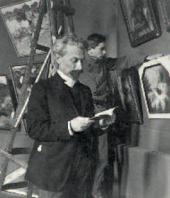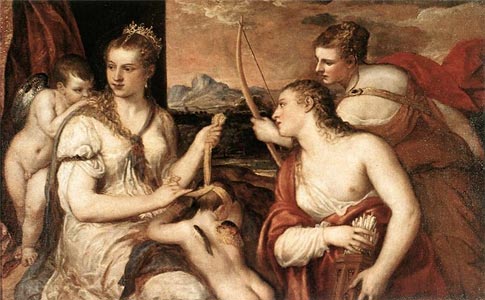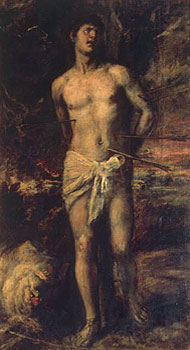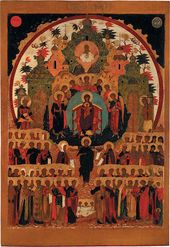Masterpieces of Russian graphics from the collection of the State Historical Museum in the Tretyakov Gallery
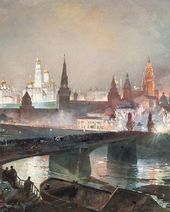 The graphic collection of the Historical Museum (GIM) is extensive and diverse. It allows you to trace the development of the Russian drawing school from its inception in the XVIII century to the end of the XIX century. The collection is notable for its diversity, explicable aspiration of the founders of the museum to reflect not only the main artistic processes, but also the phenomena of court culture, aestheticized nobility. The basic principle of GIM acquisition is the interest in important events in the history of the country, portraits of iconic people, and the specific iconography of the two capitals. When selecting the exhibits, the curators sought, on the one hand, to reflect the structure and features of the museum collection, on the other – by the example of the best works to present an exceptional level of graphic culture in Russia of the late XVIII-XIX centuries.
The graphic collection of the Historical Museum (GIM) is extensive and diverse. It allows you to trace the development of the Russian drawing school from its inception in the XVIII century to the end of the XIX century. The collection is notable for its diversity, explicable aspiration of the founders of the museum to reflect not only the main artistic processes, but also the phenomena of court culture, aestheticized nobility. The basic principle of GIM acquisition is the interest in important events in the history of the country, portraits of iconic people, and the specific iconography of the two capitals. When selecting the exhibits, the curators sought, on the one hand, to reflect the structure and features of the museum collection, on the other – by the example of the best works to present an exceptional level of graphic culture in Russia of the late XVIII-XIX centuries.
The collection of GIM graphics was formed mainly in the 1900-1920s. Watercolor drawings got to the museum in different ways, primarily as part of private collections. Among them, the largest, including including graphic sheets, were collections of famous collectors – A.P. Bakhrushina, PI Schukina, P.Ya. Dashkova. After the revolutionary events and the nationalization of artistic values, the museum received many works that previously belonged to Uvarov, Vyazemsky, Bobrinsky, Gagarin, Shakhovsky and other noble families. The State Historical Museum received significant collections after the closure of the Museum of Old Moscow and the Household Museum of the 1940s that worked in the 1920s.
The collection of graphics of the 18th century was represented at the exhibition by rare works made during the reign of Catherine II and Paul I. The earliest work is “Allegory of the accession of Empress Catherine II to the throne” by G.I. Kozlova (1762) – embodies the idea of an enlightened government of the new sovereign: for the first time the empress appears in the image of the goddess Minerva as a warrior, patroness of the arts and sciences, surrounded by figures of Faith, Justice, Hope and Russia. The creation of the sheet is associated with coronation celebrations and a masquerade held in January 1763. The monochrome composition was ordered by GI. Kozlov Imperial Academy of Arts for later transfer to an engraving N.Ya. Kolpakov.
The exhibition featured rare graphic sheets depicting historical events: “The oath of allegiance to the Russian Empire of the Novoshamakhi Khan Kasim” by G.S. Sergeeva (1796), two sheets of A.O. Orlovsky, dedicated to the liberation of Emperor Paul I. T. Kostyushko from the Peter and Paul Fortress (1797). A special place was occupied by a large multi-sheet of Academician M.M. Ivanov “Death of the Most High Prince G.A. Potemkin-Tavrichesky in the Bessarabian Steppes on October 5, 1791 “(1791). The watercolor was commissioned by the authorized representative of Field Marshal VS Popov artist, consisted in the army, GA. Potemkin, and served as the basis for the famous engraving GI. Skorodumova. In addition to the early works of A.O. Orlovsky, associated with the Polish artistic culture, “Rossika” was represented by the historical compositions of P.E. Strolls, Moscow views of J. Hirn and F. Hilferding, to the architectural “Rossica” include works by the virtuoso draftsman J. Quarenghi.
The State Historical Museum possesses one of the best in the country collections of specific graphics of the end of the XVIII-XIX centuries, including both landscape views and promising urban images. Noteworthy watercolors of the forefathers of the landscape genre: MM. Ivanova, G.S. Sergeeva, V.P. Petrova and V.P. Chetchetnikov. The amateur watercolors of the famous memoirist and creator of the first Russian landscape park, A.T. Bolotov and his son, PA Bolotov. The sheets depict the ensemble of the Bogoroditsky estate of Empress Catherine II, who later became the patrimonial estate of the Counts of Bobrinsky.
Types of Moscow before the fire show some sheets of the famous graphic suite F.Ya. Alekseev: under a special decree of Paul I, the artist with his students was sent to the First Throne “to remove from nature … all areas that are remarkable in historical and archeological relations, as well as picturesque in general” [1]. Among the sheets of the series is the rare subscription Picture of the Arm of the Stone Bridge, which served as the basis for the painting canvas. This species has gained special popularity, has been repeatedly reproduced by engravers and decorated objects of decorative and applied art. Works F.YA. Alekseeva, distinguished by rare plots with views of ancient monuments, freshness and accuracy of natural impressions, elaborate foreground, are executed with masterly ease, watercolor in them is complemented by a moving mascara contour.
The ancient capital and its picturesque surroundings are also captured in the works of Moscow architects A.N. Bakareva and I.A. Lavrova. The latter depicted a visit to the Kremlin by Emperor Alexander I in 1816, for the first time after the Patriotic War of 1812. Views of Moscow and St. Petersburg are represented in the works of M.N. Vorobyov – a leading landscape painter of his generation.
